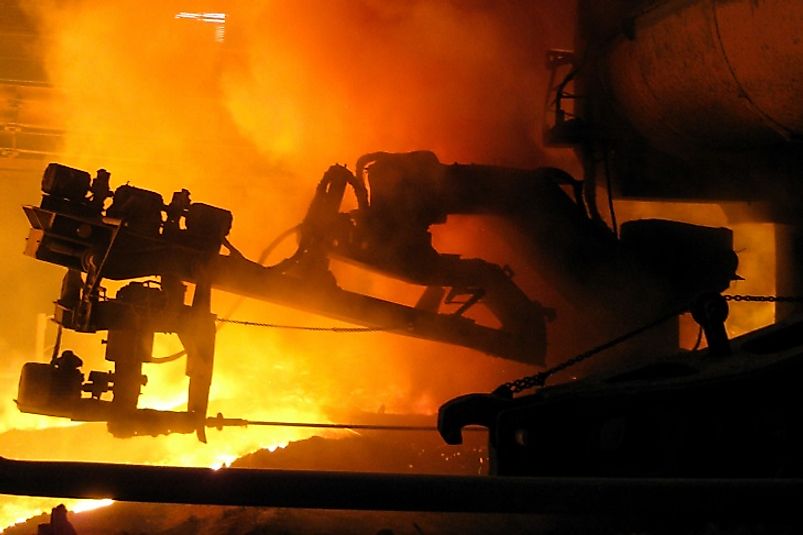The Smelting Industry: Global Importance And Risks

Smelting is a method widely used to extract metals from their ores after mining. There are many variations of smelting, and equally as many for extracting the many metals used in modern society. However. many of these processes have also been known to cause environmental damage and pollution.
5. Metals Extracted Through Smelting
Smelting is a process of extracting metals from their ores at high temperatures. Ores are mostly chemical compounds of metal with other elements, like oxygen sulfur. Smelting utilizes heat, and a reduction agent like coal, to extract the other elements from the metal according to Cornish Mining World Heritage. This results in a more refined metal product. Among the metals extracted by smelting are copper, lead, nickel, zinc, silver, cobalt, cadmium, gold, aluminum, and others. Primary smelting processes the mine ore and concentrates, and secondary smelting processes recover the scraps.
4. History of Smelting
The 14th Century is when smelting first began to be practiced in Europe. At that time, the blast furnace was introduced, which used greater air volumes, and layered the iron ore with charcoal, according to Jays Roman History. Prior to that, ancient blacksmiths could never heat the iron to the point of it flowing as a liquid. That meant they could not shape the iron to the shapes they wanted using molds, but the blast furnace eliminated these problems. Still other historical accounts suggest smelting, was first done on tin and lead, before advent of written records, according to BacTech Green Resource Center. The Inca tribe and others in the Andes territories are believed to have engaged in smelting, in the Bronze Age and at the start of the Iron Age around 1200 BC. Lead is believed to have first been smelted 9000 years ago in 3500 BC. Tin was also first smelted in combination with copper in 3500 BC, to make bronze according to Makin Metals Powders.
3. Methods and Processes
Various metals have processes of smelting. For iron, once the ore is obtained through open cast or underground mining, it’s conveyed up to the surface for crushing, washing, and then taken to the smelter. At the smelter, the crushed ore is put into a blast furnace along with limestone and coke, and subjected to hot air blasting and heat, and it turns to molten iron. Then its tapped from the bottom of the furnace into mold called pigs, and allowed to solidify to pig iron according to Bright Hub Engineering. Its then converted to wrought iron, or processed into steel. The most used processes to smelt copper are reverberation and oxygen flash smelting. For both processes, the resultant molten copper is again processed to achieve the purest copper.
2. Human Health Risks
Continued exposure of airborne pollutants generated by metal processing and smelting has been known to cause chronic diseases. Immediate exposure causes the eyes, nose and throat to be irritated. In the long term, it causes heart and lung problems, and eventually premature death according to Worst Polluted (WP), by the Blacksmith Institute. Toxic elements from smelters have been documented as causing birth defects, kidney, liver, and gastrointestinal tract problems, as well as damage to respiratory, nervous, and reproductive systems damage. In La Oroya, Peru, according to Worst Polluted, a lead smelter that has operated since 1922 caused high levels of lead to be found among children there. Lead poisoning in children causes mental and physical impairment, according to Health Line Media.
1. Environmental Safety
Smelting causes much pollution and damage to the environment. Release of gases like sulfur dioxide from sulfide ores into the atmosphere, has been reported as causing acid rain. In the long term, acid rains cause acidity in lakes and soils thereby negatively interfering with vegetation and wildlife. In Sudbury in the Ontario Province of Canada, pollution from smelters has resulted in acid damaged lakes, vegetation decimation, and widespread ecological damage. Experts attribute much of the environmental damage to old smelters with poor emissions controls. They argue for mining companies to get new smelters and processing plants, designed to keep emissions at low levels. For these companies new smelters and processing plants are costly and are ignored, in countries where enforcement of emissions regulations is lax, also according to Worst Polluted.











